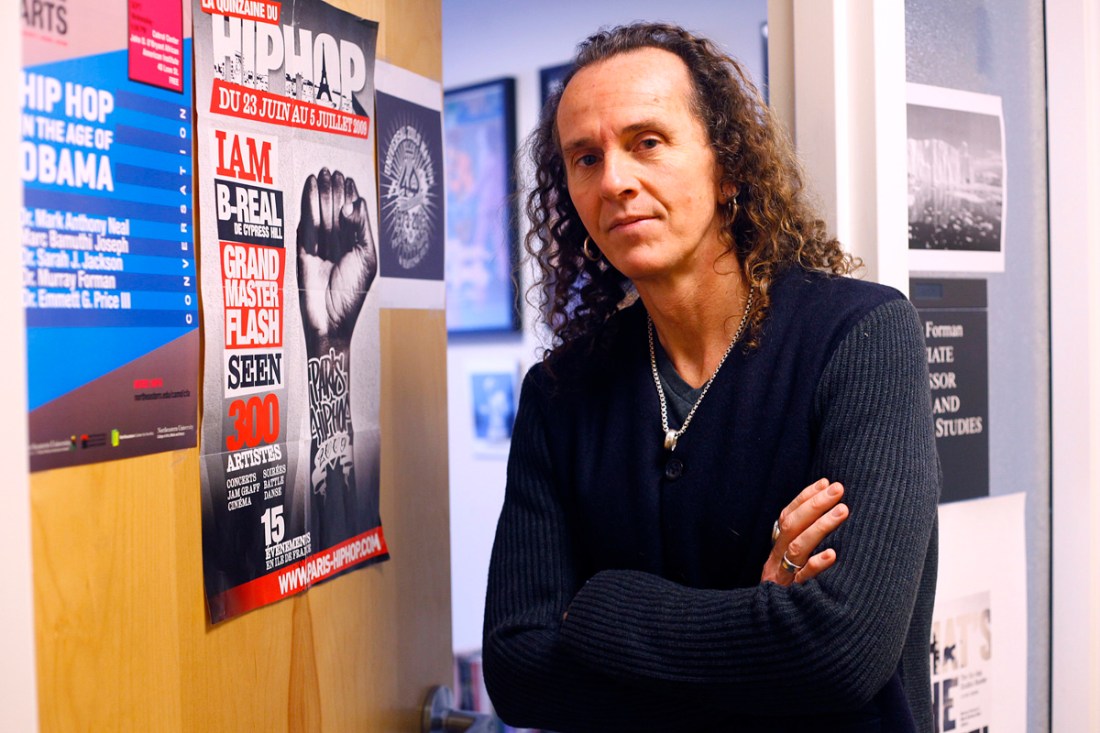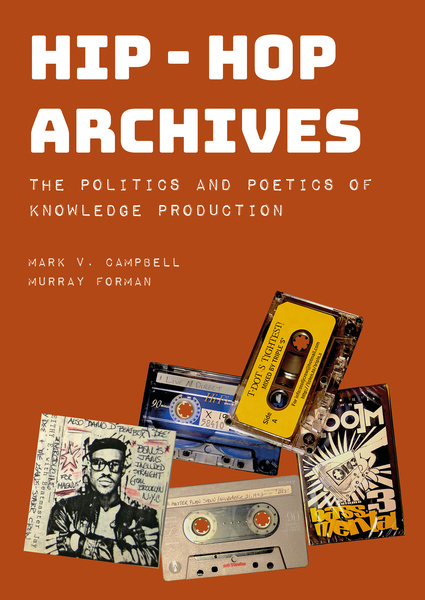From event fliers to homemade cassette tapes, some of the most valuable hip-hop artifacts may await discovery in an unassuming closet or shoebox.
Murray Forman, professor of communication studies at Northeastern, and co-editor Mark V. Campbell, an assistant professor at the University of Toronto, Scarborough, founder of the Northside Hip Hop Archive, have released “Hip-Hop Archives: The Politics and Poetics of Knowledge Production.”
According to the publisher’s webpage, the new book “Explores multiple aspects of hip-hop archives in a global context, including methods of accumulation, curation, preservation and digitization.”
While hip-hop was “created largely by and for young people,” Forman says — with 1973 as a generally accepted year of conception — “the oldest folks in hip-hop now are just starting to press toward 70 years old.”

As this generation gets older, archives are becoming increasingly important to hip-hop culture.
“What we’ve been seeing is about 50 years of accumulation,” he continues. “Some people were absolutely detailed in what they kept. They kept everything.”
As Forman and Campbell took notice of this proliferation of collections, both public and private, the question of scale led them to “Hip-Hop Archives” as a book project.
“We thought, ‘Let’s try and bring together some of these, as many as we can, and get a sense of, what is the scale of this?’” Forman recalls. “Everything from large government, institutional organizations, right down to those bedroom collections.”
The collections Forman and Campbell came across consisted of everything from venue fliers to lyric books, event photographs to homemade cassettes. “Artists kept all kinds of things that were intrinsic to their production and their creative processes,” Forman says, and “dancers have all kinds of video footage of their practice in rehearsal and performance [or] competition — their battles.”
The older generation, “people who are approaching their mid-to-late 60s,” Forman says, are “often starting to downsize,” and making determinations about what to do “with this stuff that’s in the closet, in the basement, in the attic.”
Crucial to Forman and Campbell’s project, however, was “this recognition that if they don’t do something with this material, parts of the story, parts of the culture and the history, are going to be lost.”
Why keep everything?
Forman describes some of the questions that archives can help answer. “First of all, it gives you a mapping, a geography of the clubs and different places,” he says, describing the fliers for different venues and events.
“So you can get a sense of where in the Bronx, and maybe in Harlem, the clubs were, and how close they were. And sometimes [in the collectors’] materials, you see where [the collectors] lived, and you get a sense of how close they were to one another, and how close they lived to the clubs.”
Beyond geography, something as simple as a concert flier can answer questions of cost, dress code and the billing for that night’s event. “Who’s up and coming? Who are the stars [already] established — even though this is a nascent culture?”
Add photographs to the mix, “and you get a sense of what the style was, what the scene looked like. Was there graffiti on the walls? Were there b-boys [breakdancers] on the floor?”
“What was the gender makeup of the crowd? It’s all there.”
Until now, Forman says, much of the material could not truly be considered archival, in the sense that it hasn’t been cataloged or described, let alone digitized — something many modern archives strive for.
This is one of the thrusts of “Hip-Hop Archives,” providing a throughline from those with preexisting collections to those who would like to be involved in maintaining the history of a culture.

For Forman, the modern hip-hop archive needs to go beyond housing material by “making connections to the community.”
“Until we have more hip-hop identified folks, or hip-hop knowledgeable folks, working in archives, the institutions are really unaware of what hip hop is,” he says.
“You can’t just take stuff and put it on display,” Forman continues. “It has to be much more dialogic.”
This, he says, is a vital “part of building more of a reciprocal, community-based archival approach.”
Who should a hip-hop archive serve?
As the archives continue to grow, Forman also hopes to see “hip-hop identified folks start stepping into the archive and taking on archival labor, archival responsibilities, fully understanding what all the processes are, but also being fully immersed in hip-hop culture.
“With a hip-hop sensibility, we can maybe alter how archives approach the culture.”
“Once you get this connection,” he continues, “I think the archives are really going to be stronger. I think they’ll be more solid, and they’ll be better for both community legacy-building and establishing that historical knowledge.”
What’s most important, as the first generation of hip-hop enthusiasts gets older, Forman says, is to “ensure that this cross-generational dynamic is maintained.”
The older generation is “suddenly looking at all this material that they’ve accumulated and saying, ‘We need to do something meaningful and significant for the culture to preserve it.’”
Forman thinks that young hip-hop listeners can be brought in “in a participatory and collaborative way so that they feel that their knowledge and their experiences as younger people are valued, and also that they’re able to tap into what’s going on today in their culture and say, ‘You know what, we actually think this is significant.’
“And they can, you know, hone their own rationale, an explanation of why this might be valuable to the future.”
“Hip-Hop Archives” first appeared in November, along with the third edition of “That’s the Joint!: The Hip-Hop Studies Reader,” which Forman co-edited with Mark Anthony Neal and Regina N. Bradley.
“November is widely recognized as Hip-Hop History Month,” Forman notes. “2023 was recognized as the 50th anniversary of the culture. So for us to hit those marks was really, I think, culturally important.”
“I’m in service to hip-hop,” Forman says, which “was something that young people built.” But “you don’t want to lose anybody [or] their stories.” Archives mean that the stories of one generation, so important to the foundation of a culture, can continue being told.
Noah Lloyd is the assistant editor for research at Northeastern Global News and NGN Research. Email him at n.lloyd@northeastern.edu. Follow him on X/Twitter at @noahghola.
